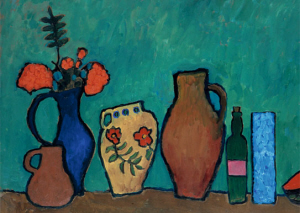
Gabriele Münter (1877-1962),
Stillleben mit Vase, Flaschen und Zweigen eines Vogelbeerbaumes (Still life with vases, bottles and rowan branch), 1908/09. Did any of these vessels contain beer?
When dedicated beer tourists descend on Bavaria, they tend to head north, for Bamberg and the bucolic Bierkellern of Upper Franconia, where the concentration of breweries per square kilometre is famously the densest in the world. But anywhere you go in this most beer friendly of German Länder, something of interest is never far away. Even the ubiquitous big Munich breweries, most now in the grip of multinationals, still turn out beers of at least passable standard.
Oberbayern, or Upper Bavaria, is the historic core of the former kingdom – Franconia, for all its fame, only became part of Bavaria in 1803. Oberbayern is a triangular area with Munich (München) at its centre, and it gets its name from its higher elevation. Around the state capital the countryside is relatively flat, but head south and it’s not long before the land starts rising and falling before clambering to the cracked and jagged heights of the Alps, where the mighty Zugspitze – Germany’s highest peak at 2,962m – guards the border with Austria.
This is the Bavaria of the tourist brochures, where the whitewashed walls of shallow roofed houses bear religious paintings and homilies in Gothic script, and the locals obligingly wear Lederhosen and felt hats stuck with feathers when popping out to the post office. Numerous lakes hide among the lower peaks of the Voralpen, creating jaw-droppingly beautiful vistas of placid blue waters and fertile flower meadows surrounded by rugged snow-capped peaks. The natural beauty is reason enough to visit, but the region is also known for its health spas and Kuren, and Germans are as likely to come to recuperate as to walk, cycle or gaze.
Murnau am Staffelsee is one of the region’s principal centres, originally a waypoint on the Roman road to the Brenner pass and now a pretty little town in an idyllic setting just above the lake known as the Staffelsee, with excellent rail connections. The local tourist board markets the town and its hinterland as das Blaue Land, the Blue Land, exploiting its connection to the early 20th century group of Expressionist artists known as der Blaue Reiter, the Blue Rider, led by Wassily Kandinsky and Franz Marc. Kandinsky’s partner and fellow artist Gabriele Münter lived in Murnau and her house is now a visitor attraction, while her work helps draw the crowds to the Schloßmuseum. Münter entertained numerous other arty notables here, including Paul Klee and Arnold Schoenberg, until driven out by the Nazis.
Back then, the town had nine breweries and brewpubs. As the century drew to a close, only wheat beer brewery Karg remained, though since 2000 brewing has been restored with great success at one of the old brewpubs, Griesbräu. Murnau is no Bamberg, but between them Karg and Griesbräu, each at different ends of the picturesque market street that bisects the town, well reward the beer explorer. Both in their own way demonstrate how Germany’s notoriously traditional and conservative brewing industry is subtly adapting to contemporary trends.
In a country where breweries regularly claim several centuries of tradition, Karg is a relative newcomer. It was opened in 1899 on the Lederergasse, in the shadow of the typically southern German St Nicholas church. Andreas Karg bought the brewery in 1912 and his grandson, Franz Schubert (no relation to the similarly named Austrian composer and songwriter, as far as I’m aware), has presided since 1977, following a stint at Kloster Andechs. In recent years, Franz has run the business jointly with his daughter Victoria.
Head down the Untermarkt, the southern part of the main drag, and you’ll find the Karg Bräustüberl or brewery tap at number 27. The view, with the mountains looming ahead, is very much as it looks on Karg’s labels, where it’s ringed with the blue and white checkers of the Bavarian flag. Lederergasse runs near parallel at this point and the brewery itself is just across the road at the back of the pub. It’s an unremarkable but not unattractive building with windows giving a view of the brewing vessels from the street, a compact and businesslike old-style town centre brewery, though with up to date and automated equipment.
Karg once brewed the full spectrum of Bavarian beer styles but in 1980 Franz decided to concentrate on warm fermenting wheat beers, and with notable success. Its lengthy stint as the town’s only brewer has given Karg a local cachet and a strong regional customer base, but it also ships its beer to the rest of Germany and other countries, including the UK and US, producing a total of 10,000hl a year. I’ve long thought of it as a producer of tasty and interesting minor classics in the traditional Weizenbier style, but recent developments indicate the brewery is willing to push that particular envelope and it’s likely to become even more interesting in future.
I didn’t pre-arrange a visit and called at a time when the Bräustüberl was closed for refurbishment following the retirement of a longstanding landlord. But poking around looking for off sales I bumped into Victoria Schubert herself, who somehow found time off from the pressures of the imminent reopening to chat for a while. By then it was too late in the day for a brewery tour – they normally operate for pre-booked groups on Tuesdays.
Victoria is an enthusiastic and energetic young woman with a broad background in the industry, a qualified beverage industry manager and a beer sommelier. She’s a former Londoner – Meantime was her local brewery when she lived in Greenwich and she’s impressed by their approach and their beers. The refurbished Bräustüberl, which reopened in mid-July, aims to stock international beers as well as Karg’s own brews, and to match them with food, both highly unusual practices in Germany. “Most people round here just drink the beer from Murnau or Munich,” she tells me. “But there are now sensational beers from around the world, and we want to help our customers discover them.”
This international awareness is also rubbing off on Karg’s own beers. A new pale wheat beer, Staffelsee-Gold, was launched last year to celebrate the centenary of family ownership. Despite reviving a brand name last used 60 years ago, this is a contemporary creation, describing itself as stark gehopt, strongly hopped. While it’s unlikely to challenge hopheads schooled on double IPAs, it’s strikingly assertive by local standards, and the hops used – notably English-grown Cascade – lend vivid floral and citrusy tones quite different from the subtle grassiness of more traditionally Germanic ‘noble’ varieties, adding further layers of complexity to the fruitiness of the Karg yeast. The combination has proved a winner with customers and the beer, originally a one-off special, is becoming a permanent addition to the range. Read tasting notes.
To find Murnau’s second brewing gem you need to turn your back reluctantly on the mountains and head in the opposite direction to reach Obermarkt 37. While the current brewery is a 21st century addition, the site can claim a history considerably longer than Karg’s. There’s been a hostelry here for centuries, and brewing since at least 1676. The old brewpub was built from distinctive gravelly stone, hence the name Griesbräu, from an old local word for gravel (Kies in modern German). That building was destroyed in a massive fire in 1835, along with most of the street, so the quaint mediaeval-style façades seen today are actually more recent rebuilds.
Griesbräu was rebuilt in its current sprawling form in 1836, and brewing continued until 1917 when the business was bought out by the Thomas brewery of Munich, later absorbed by Paulaner. Brewing ceased, though the building continued in use as a big pub and hotel. In 1922 the Gilg family took over the running of the place and in 1997 the latest generation, Michael Gilg and his wife Barbara, found themselves in charge.
Michael was then still in his early 20s, and the concept of business as usual didn’t make sense, for all that his inheritance was a local institution that counted Kandinsky and Münter among its former regulars. “By that time it was clear,” he recently told a local magazine, “that we had to modernise.” The complex included a big vaulted space used as a storeroom, but Michael saw the potential to convert it into a brewpub, preserving a traditional atmosphere alongside a modern brewery and more contemporary beers.
The reinvented Griesbräu opened in 2000 and very impressive it is too. Head through the coaching arch with its filigree metal sign to find yourself in a delightful courtyard beer garden insulated from the bustle of the street by those solid early 19th century buildings and the dappled shade of trees. Big picture windows in front of you reveal the brewhouse. The hotel, restaurant and lagering hall are off to the right but allow yourself to be lured by the gleam of copper into the pub.
The interior has bare brick walls and typically simple but sociable chunky wooden tables, its vaulted ceiling festooned with hops. It’s spacious and might be cavernous, but good design keeps it friendly and inviting as a place to linger. The natural elegance of the brick arches helps achieve an effect that’s pleasingly clean, simple and contemporary though gemütlich enough to tempt the more conservative locals to cram its wooden benches with their well-stuffed Lederhosen. A food buffet dispenses hearty local cuisine at very reasonable prices, with a surprisingly impressive array of vegetarian options alongside substantial chunks of poultry and meat, and bread made with spent grains.
The computer controlled 10hl kit springs to life two or three times a week. It’s a typical modern German microbrewery, with only two vessels, a mash tun/copper and a lauter tun, and a whirlpool in the cellar beneath. It produces three regular beers – a helles, a dunkles and a Weizenbier – plus a changing seasonal, served unpasteurised and unfiltered in the pub or to carry out in hand filled and labelled 1l Maurerflaschen (flip top bottles). All are impressive – the full bodied, perfumed helles is outstanding – but the brewery is also noteworthy in its realisation that it can no longer take the appreciation of the Bavarian beer drinker for granted.
Every month Michael Gilg gives Bierseminaren, introducing customers to brewing techniques and the varied flavours of his beers and rewarding them with a Bierkennerdiplom (Beer Expert Diploma). He’s also not afraid to stretch the locals’ accustomed tastes – this year’s summer seasonal, a golden wheat beer called Sommerfrische, came bursting with aromas of Amarillo and Citra hops. And if a beer seminar sounds forbiddingly academic, be reassured by Griesbräu’s strapline, “Wo´s Bier Spaß macht!” – Where beer is fun. Read tasting notes.
I’m grateful to Ramblers Worldwide Holidays for my Bavarian trip – you can read more about it in a future issue of BEER magazine.



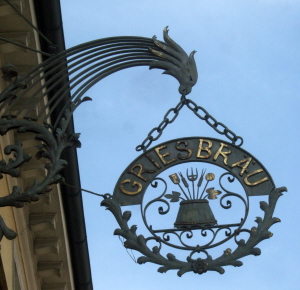
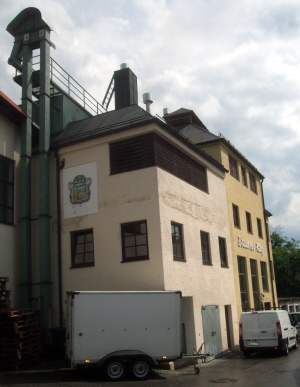
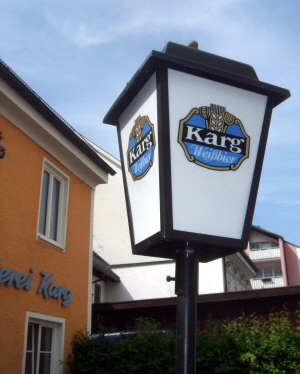
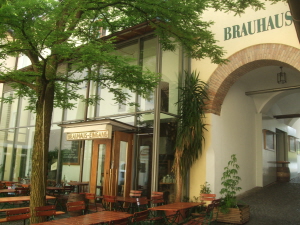
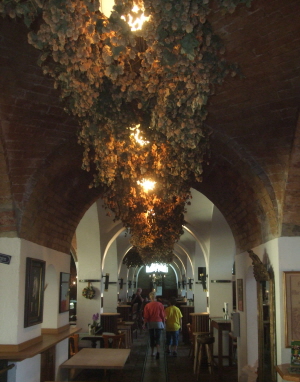
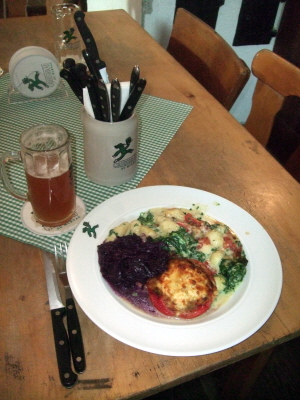


Leave a Reply